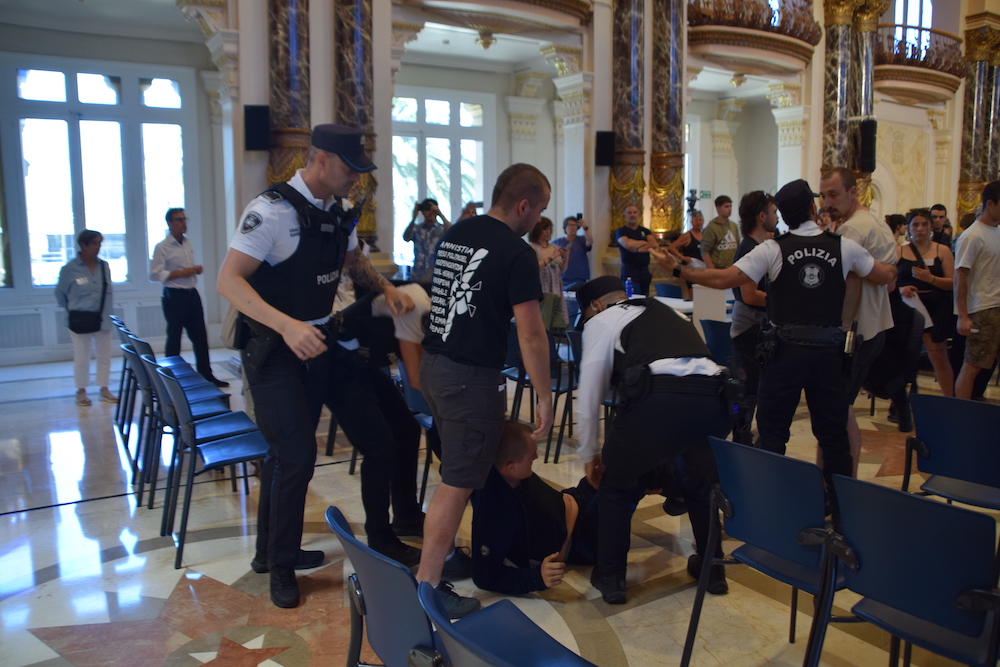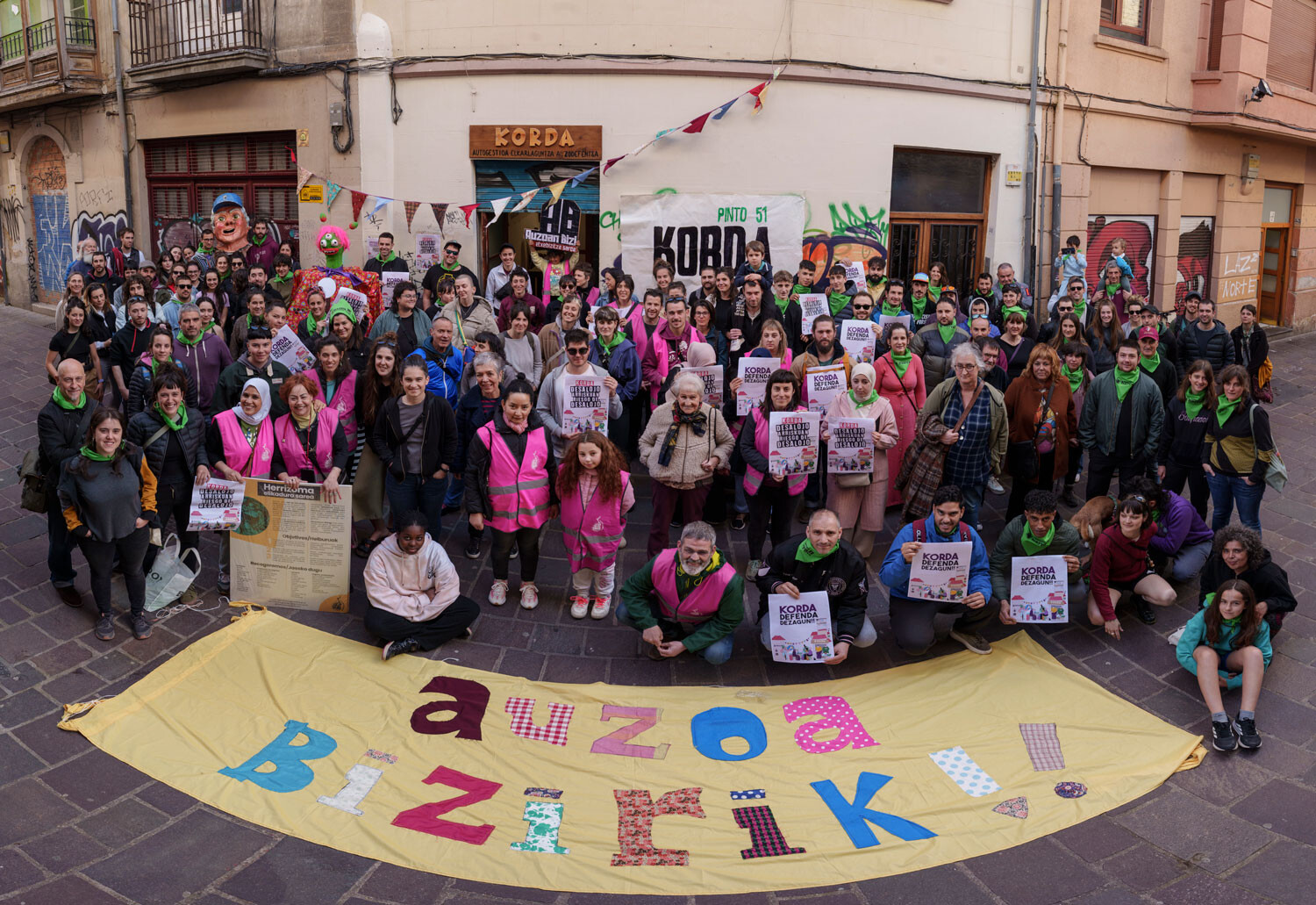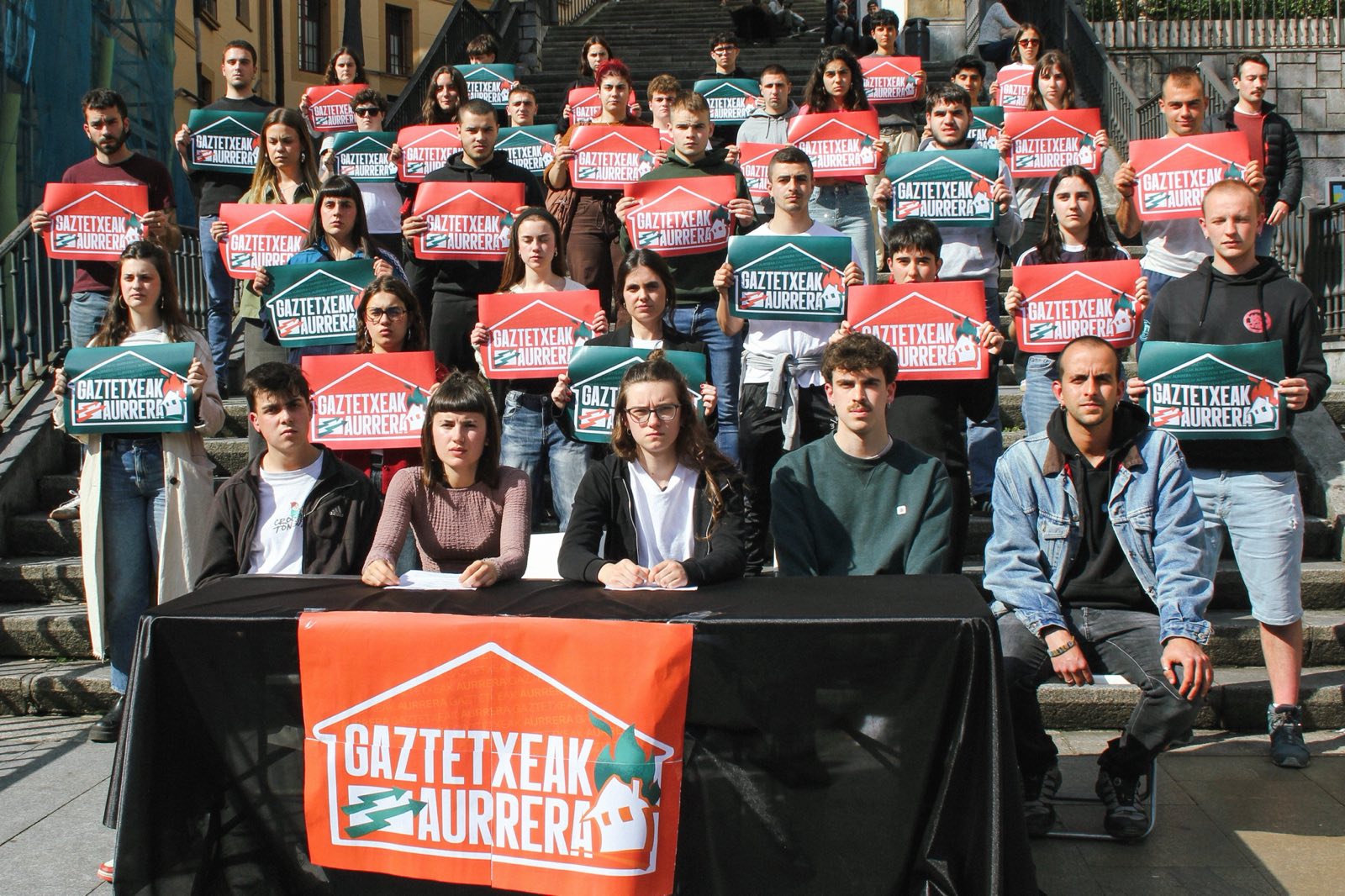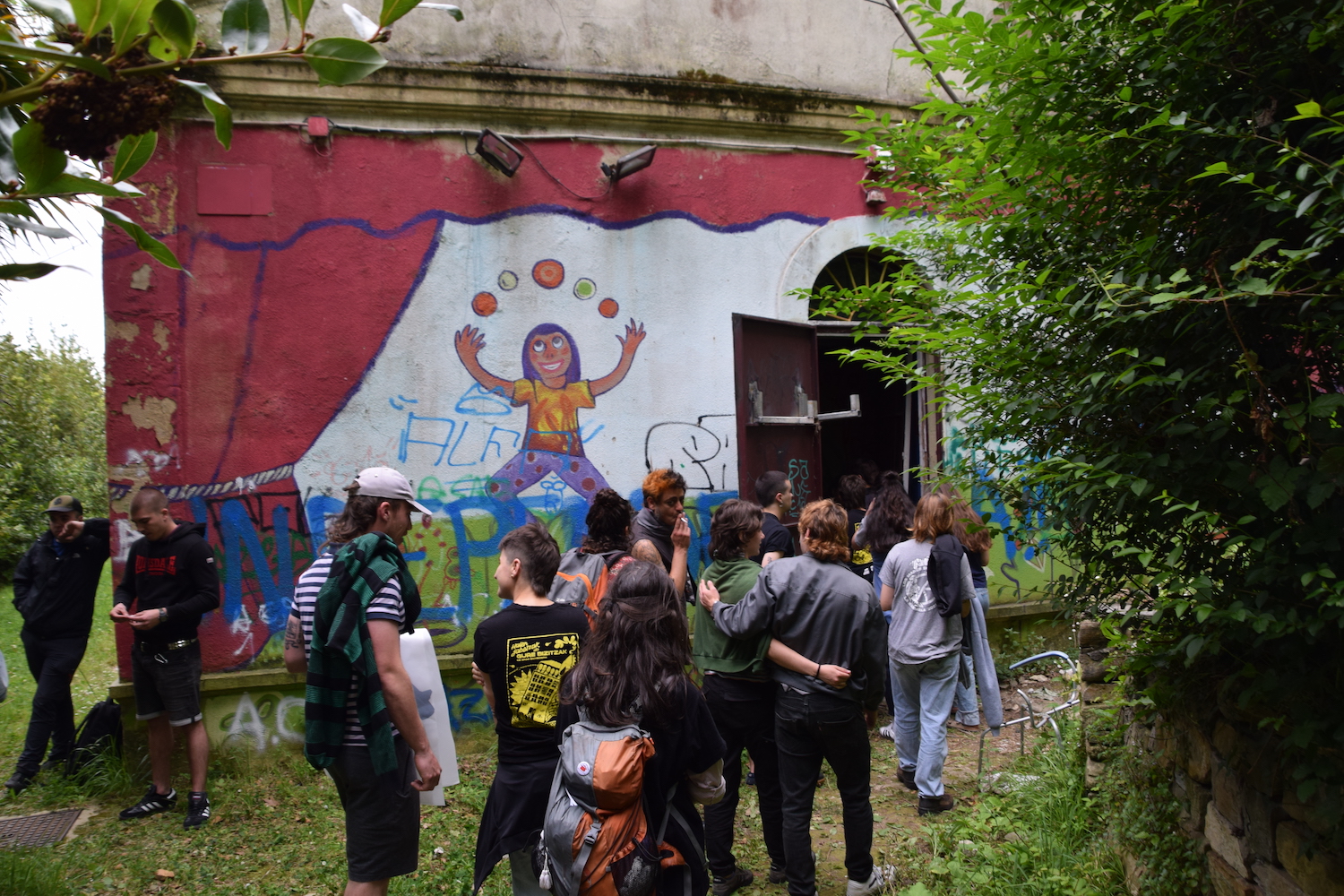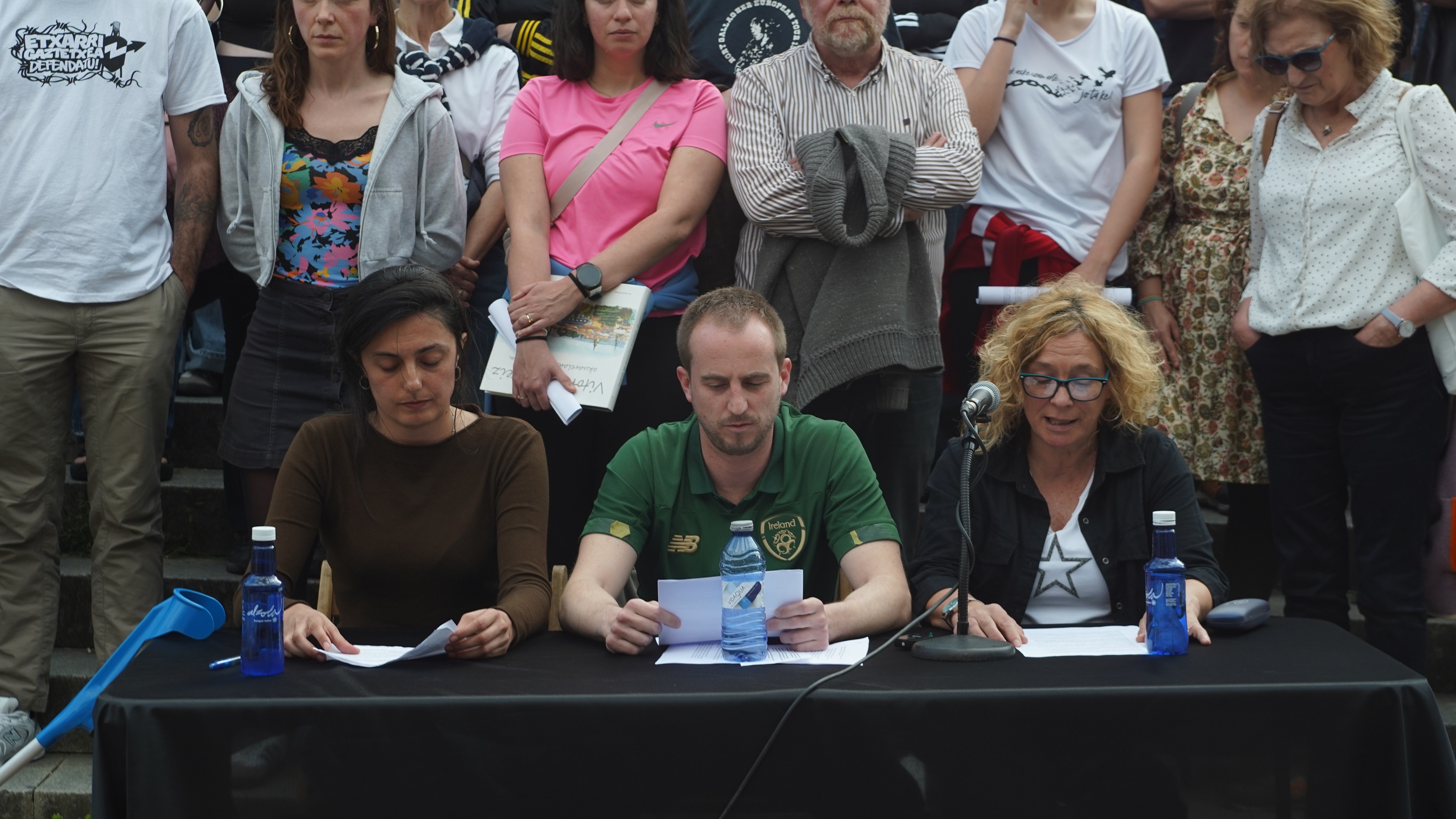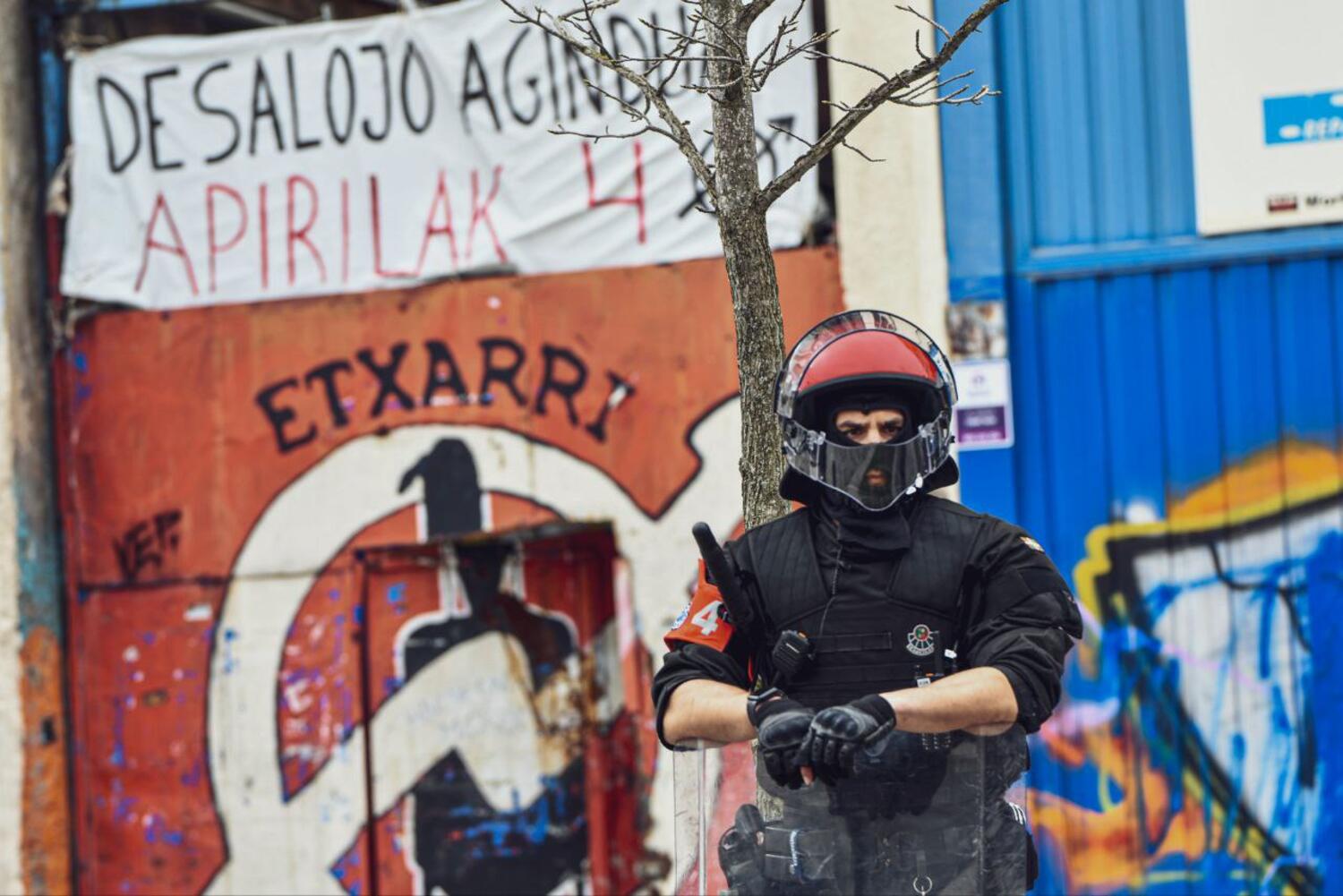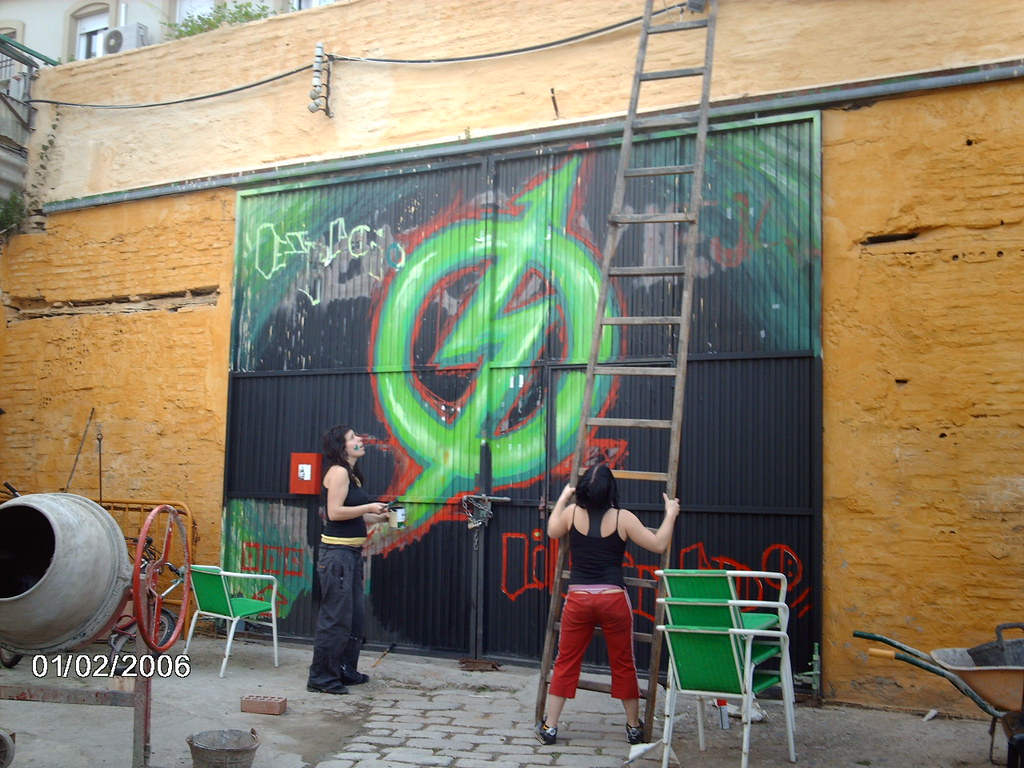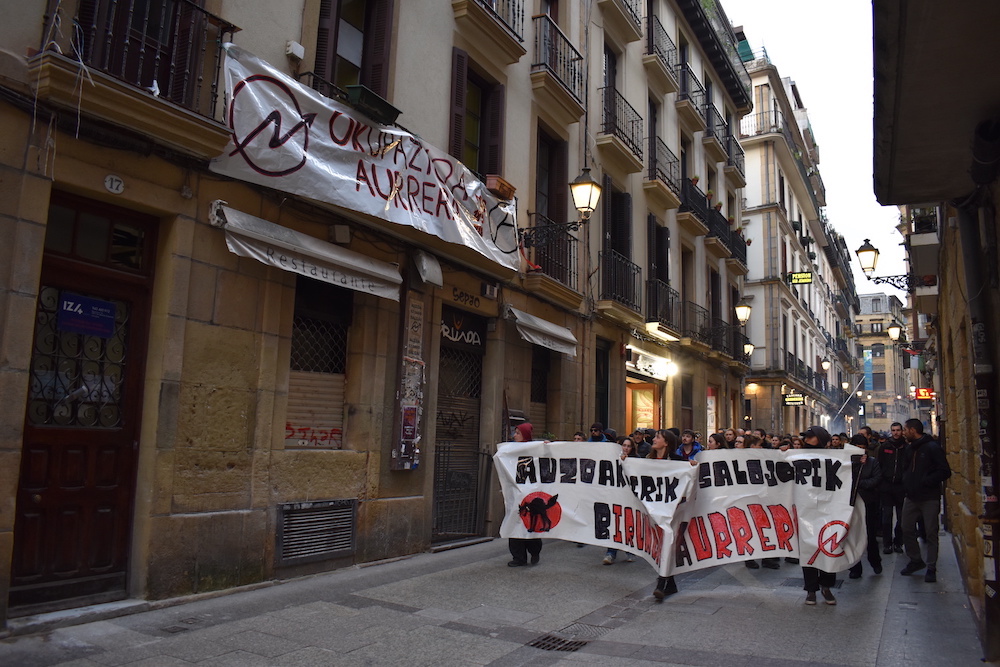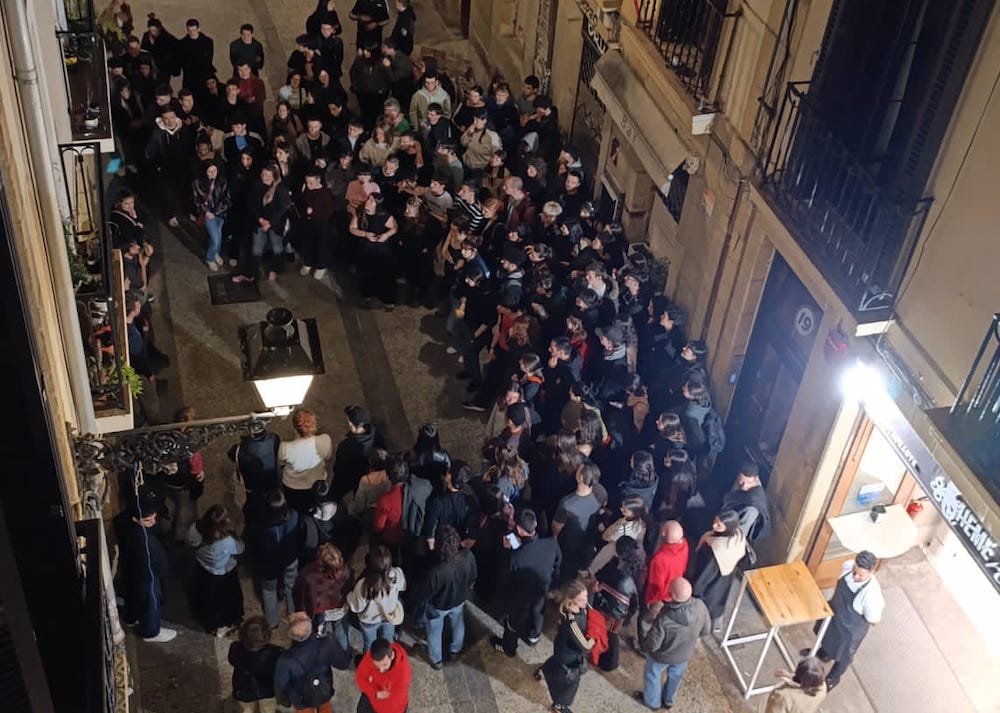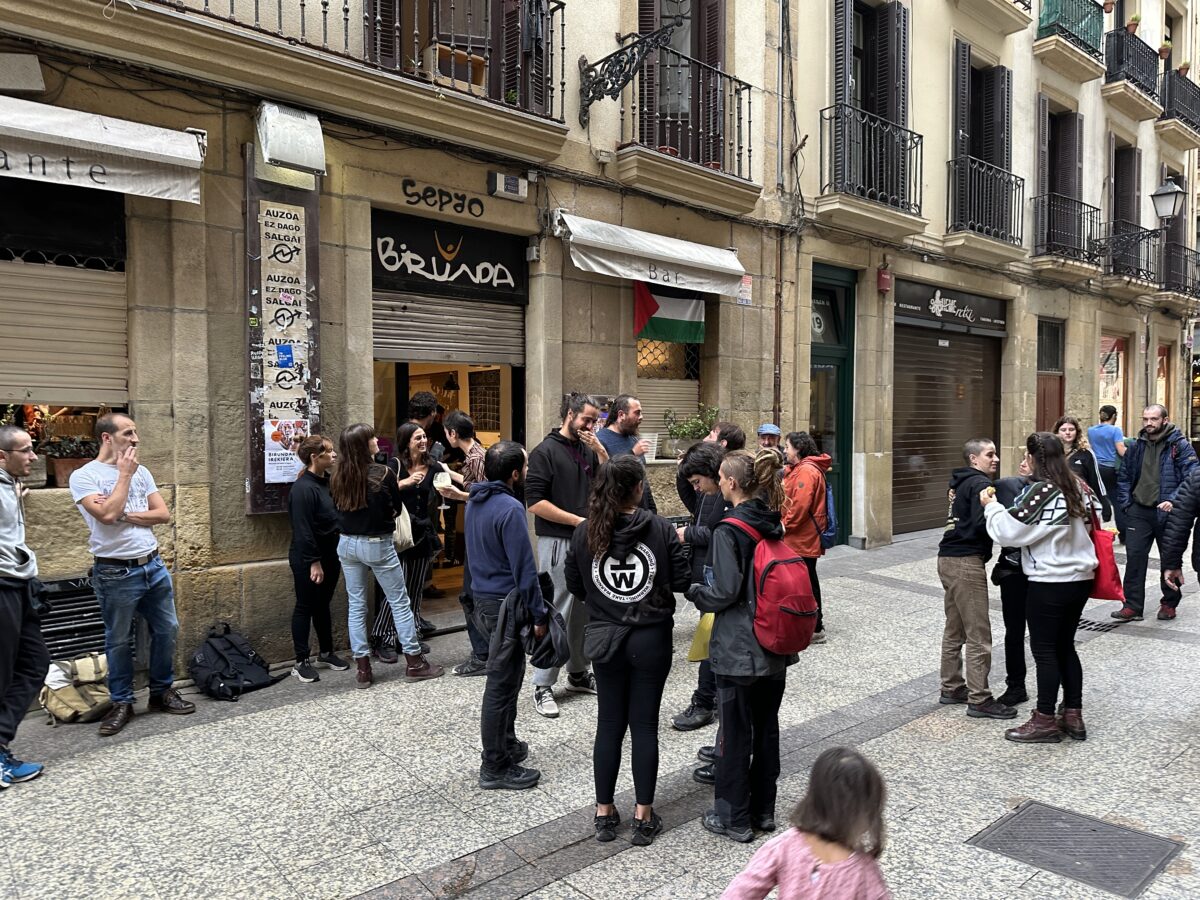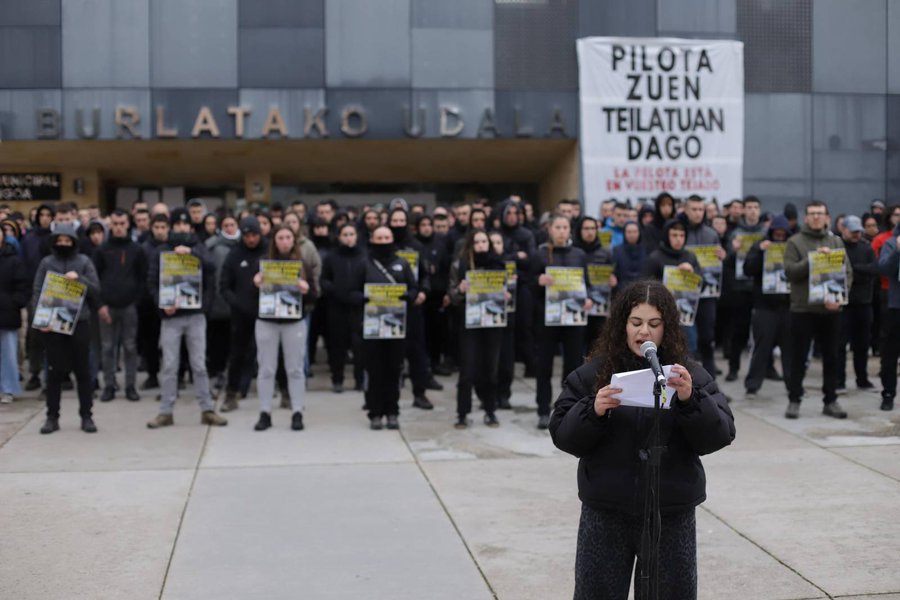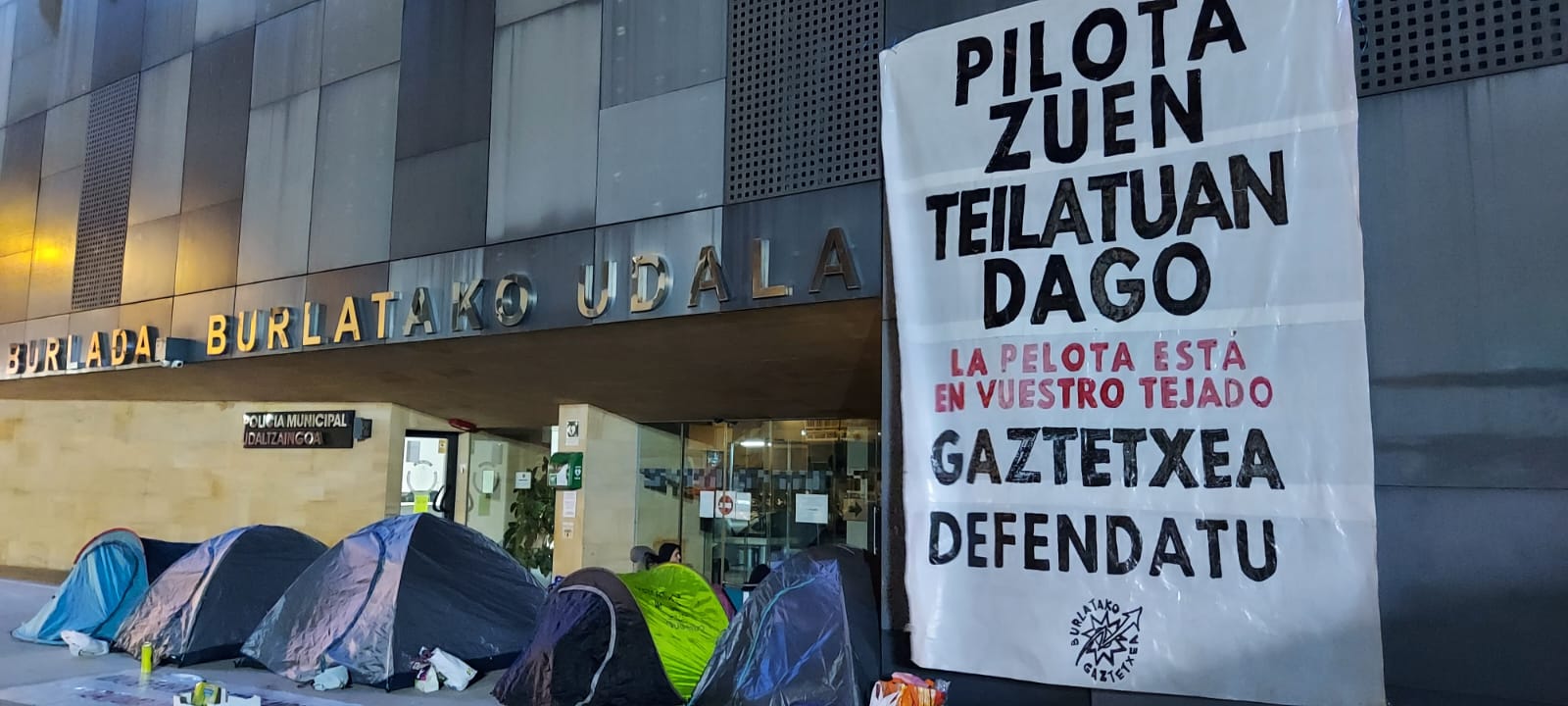The Gaztetxe of Gasteiz, a project cooked over a slow flame
On 28th of April, it will be 30 years since the first kick: the kick to the door of the bishop’s medieval garage that nobody imagined would start such a long journey. Meetings, symbolic occupations, speeches, interventions in council meeting were the actions that carved out a path for the Gaztetxe and for squatting Gasteiz.

It was 1986. The middle of a whirlwind of mobilisations, punk-rock sounds, GAL (Spanish paramilitaries) attacks every weekend and constant clashes between the Spanish National Police and workers' and students' movements. The alternative youth movement was continuing to to organise itself to face different problems. In a city like Gasteiz, which was still suffering from the wounds inflicted by the massacre of 5 workers on the 3th of March 1976, the libertarian movement was taking shape faster than anywhere in Euskal Herria- Basque Country.
Hala Bedi, a pirate radio established in 1983, was trying to establish itself despite its broadcasts being continually shut down. The radio functioned effectively as a loadspeaker for this emerging social movement. The fanzine ‘Resiste’ was another example of the autonomous movement in the city. This very year the “Asociación Cultural de la Zapa” was born, around the centric Zapateria street of the old town, organizing concerts, exhibitions and protest actions… But it wasn’t enough. The movement desired a place of its own without any institutional control. In the summer of 1986 a group of young people started to meet and flesh out the idea of transforming desire into reality.
A combination of school dropout, an unemployment rate for young people above 30% and speculation in housing that made it hard to find a place to live condemned young people in Gasteiz to a ‘no future’ situation. On the street, they were constantly harassed by institutions which offered no solutions. In different meetings, a small but diverse group of young people, autonomous and libertarian, reflected and reached conclusions about the situation that people from the capital of Araba were living at the time.

One of the problems that was clearly identified in meeting after meeting was the high cost of housing which made it hard for young people to become independent. This affected everybody, activist or not.
Self-management –a key postulate in the autonomous movement of Euskal Herria–, was an organising principle that came to prominence in the 80s. It was a hot topic. How to self-manage? What is self-management? Does it mean going without any external help? This debate, which is still ongoing 30 years later, left many doubts but also reached some conclusions. One of these was the indisputable need for an autonomously managed space. The gaztetxe –youth house if literally translated– wasn’t originally intended as a place for young people, but as an autonomously run place for everybody.

Another central topic was the increasing repression carried out by the Gasteiz Local Police against social movements. Although local police had limited their actions to giving traffic fines and looking for drugs, they started to cooperate with the National Police –which had a station in Correría street at that time.
There was a lot of diversity in the debates, but in the end a common need emerged for an autonomous centre. It was time to come together.
At the beginning, this idea was present mainly amongst serious activists, but it later came to include more people. There was no fear: from the word of mouth, they started puting posters advertising assemblies every saturday at 6pm in the establishment of unemployed workers in Zaramaga neighbourhood. One, two, three, four… The “Asamblea juvenil de Gasteiz” was running faster and faster, for the number of assistants grew in every new assembly, nevermind the reticence of some political branches. “Ezker Abertzalea” (leftist Basque patriots) in particular, which is a supporter nowadays, but wasn´t at the beginning.
 From word of mouth to posters, from little meetings to advertised assemblies, and from internal considerations to public demands through the media. Little by little, newspapers or radios started to spread these demands, which were supplemented with speeches in various spots of the city.
From word of mouth to posters, from little meetings to advertised assemblies, and from internal considerations to public demands through the media. Little by little, newspapers or radios started to spread these demands, which were supplemented with speeches in various spots of the city.
A spreading and involving effort was made towards different social groups of the city, such as spare time groups. Just two months before the squatting, the 13th of february 1988, a “kalejira” (a passacaglia event) took place in the streets of Gasteiz demanding a Gaztetxe. So was the yearning that a symbolic squating was performed in the “Asociación de Vecinos Gasteiz Txiki”, denouncing the lack of places for the young people to carry out their projects.
10 days later the identity of this actions´ organizer was revealed. The 24th of february 1988, “Asamblea Juvenil de Gasteiz” was presented officially.
Concurrently, media were showing the work of the assembly. So far as it was suggested to ask for one place for each neighbourhood to the Council, which would work freely, self-managed, open to different asociations, with no timetables or “bosses” and with no police control at all.
But this demand had to deal with some logistic and support issues. And it couldn´t wait. New places were needed to proceed with the projects people were working on.
Years of assemblies, reflections, speeches… that wouldn´t stop there, but changed their ways since that day, 28th of April 1988.
 That day, around 1pm and attracted by some wall posters, about 300 people gathered and started a demonstration that began in Fariñas (in the entrance of Cuchilleria street) and finished with the squating of the building that we know as Gasteizko Gaztetxea now.
That day, around 1pm and attracted by some wall posters, about 300 people gathered and started a demonstration that began in Fariñas (in the entrance of Cuchilleria street) and finished with the squating of the building that we know as Gasteizko Gaztetxea now.
“Patada y pa’ dentro” (something like “kick and get in”) that wasn´t symbolic this time. More people joined these 300 people to help cleaning and working at the old garage of the bishopy of Gasteiz. While hundreds of kilos of litter were taken out from the building, different resistance systems were being developed.
First weeks were full of work and stress. Everyday 20 people slept inside the building, faced with the danger of an imminent eviction. Meetings everyday, along with daily visits of the police… But there was so many people gathered that they never dared to act.
It was acomplished: popular movement of Gasteiz and young people had won one of the most decisive rounds of the last decades. There was no turning back, the Gaztetxe of Gasteiz was born.
Nowadays, this project can be proud of being one of the most consolidated projects in Gasteiz. Little people can say that have never been there, know somebody that has been active in it, or never had a drink in the “house on the top” (la casa de la colina). A house where a youth assembly -that wasn´t a ‘life project’ at first, in 1988- continues gathering people to achieve common goals.
This article was originally published in Hala Bedi, and was brought to ARGIA thanks to Creative Commons license.
Tentsio uneak bizi ahal izan dira ostegun eguerdian Donostiako Udaletxeko udal batzar aretoan.
21 Zabalgunea udal soziatateak desalojo data ezarri diela jakinarazi dute Alde Zaharreko espazio okupatua kudeatzen duten Auzoan Bizi etxebizitza sareak, Herrizoma elikadura sareak eta Zaharraz Harro jai herrikoiak. Korda “defendatuko” dutela adierazi dute.
Airaldeko Greba Batzordeak (SOS Aiaraldea) jakinarazi duenez, larunbatean hartu zuten itzulera hegazkina desokupazio enpresako kideek.
Agerraldia egin dute asteazken arratsaldean, Bilbon, eta "Euskal Herriko gazte langileei" dei egin diete gaztetxeetara hurbiltzera, antolatzera, eta "horien alde borroka egitera". Polizia "gazte langileen aurkako estatuaren erreminta zapaltzailea" dela... [+]
Hainbat okupazio "sinboliko" egin ostean, dozenaka lagun Urgulleko Guardetxean sartu dira eta garbitzen eta txukuntzen ari dira, ekitaldi kulturalak antolatzeko.
Beste bizi eredu baten alde eginez, hainbat belaunaldik ikasteko, antolatzeko, esperimentatzeko eta trebatzeko aukera izan dute Lakaxitan bi hamarkada hauetan zehar. Gazte belaunaldi anitz ikusi ditu gaztetxeak, eta Jaion bestan, oraingo gazte mugimenduko kideak ez... [+]
Ospitaletik irten eta berehala prentsaurrekoa eman du Iker Aranak, Errekaldeko gaztetxearen aurrean. Gaztetxearen desalojoan ertzainek "neurrigabeko indarkeria" erabili zutela salatu du, eta salaketa hurrengo egunetan aurkeztuko du.
Dozenaka auzokidek babesa agertu diote proiektuari igandean. Alde Zaharreko lokala udalaren jabetza da, eta hiru urte dira hainbat eragilek elkarlanean okupatu zutela.
Bilboko Etxarri II gaztetxearen hustuketan gertatutakoaz hitz egin du Ertzaintzaren jaurtigai baten ondorioz barrabila galdu duen 33 urteko bizilagun batek. Beste zenbait bizilagunekin zegoen han, gaztetxeko kideen elkartasunean, "modu baketsuan".
Azaroaren 19an Justiziaren Eraginkortasunari buruzko Legea eta Prozedura Kirminalaren Legea aldatu zituen Espainiako Kongresuak, beste lege sorta batzuk onartzearekin batera. Horrek epaiketa azkarrak egitea, pisu turistikoen erregulazioa aldatzea edo kaleratze zehatz batzuen... [+]
Pasa den asteko "kaleratze ilegala" salatu dute hainbat herritarrek, ostiral arratsaldean.
Joan den asteko kaleratze "ilegala" salatzeko, manifestaziora deitu dute ostiral arratsalderako.
Ustez, lokalaren jabetza eskuratu dutenek bidali dituzte sarrailagileak sarraila aldatzera; Ertzaintzak babestuta aritu dira hori egiten. Birundak epaiketa bat irabazi du duela gutxi.
Protestak 24 ordu bete dituenean, suhiltzaileak bertaratu dira udaletxera eta kateak moztu dizkiete bi gazteei. Bi kateatuek gaua bertan igarotzea "udaletxearen hautua" izan dela adierazi du Gazte Asanbladak, eta udalaren ordezkariek "ekintza deslegitimatzeko eta bi... [+]
EH Bildu agintean dagoen udalak gaztetxearen etorkizuna ziurtatzeko aterabide bat adosteari "uko" egin diola salatu du Burlatako Gazte Asanbladak. Beste hainbat gaztek udaletxe kanpoan kanpatu dute, eta goizean zehar bertara hurbiltzeko dei egin dute.









